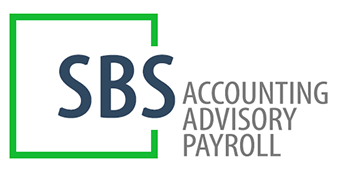Dividends are one of the most critical aspects of corporate financial management, especially during annual reporting periods. The decision to distribute profits as dividends has important implications for accounting, taxation, and legal compliance. This comprehensive guide walks you through how dividends are accounted for, who is eligible, when and how they can be paid, and what happens if they’re not.
What Is a Dividend in Accounting Terms?
Under the Hungarian Accounting Act (Act C of 2000), a dividend refers to a profit distribution made to company shareholders or members from the current year’s after-tax profit, possibly supplemented by retained earnings (free retained earnings).
Dividends can only be declared if the company has sufficient distributable profits after taxes, and the amount must comply with capital preservation rules set by the Act.
Who Is Entitled to a Dividend?
According to the Hungarian Civil Code, only those members or shareholders who are listed in the company’s registry at the time of the dividend decision are eligible—unless the company’s articles of association specify otherwise.
The articles may also allow dividends to be distributed in non-cash assets if agreed upon.
Additionally, entitlement is proportional to the member’s fulfilled capital contribution. Unless otherwise agreed in the articles of association, dividends are divided based on each member’s shareholding ratio.
When Can Dividends Be Paid?
Dividends can only be declared once a year, when the company’s annual financial statements are approved by its highest decision-making body (e.g., the shareholders’ meeting).
While the decision is made annually, the actual payment of dividends can be scheduled for a later date, based on the company’s financial situation or cash flow planning.
How Much Dividend Can Be Paid?
The amount of dividend must not exceed the sum of the previous year’s after-tax profit and any available retained earnings. However, certain legal restrictions apply:
- The net assets (equity minus tied-up and revaluation reserves) must not fall below the registered capital even after dividend distribution.
- Tied-up reserves, such as development reserves, cannot be distributed as dividends.
For parent companies, dividends received (but not yet recognized in the previous year’s report) may increase the distributable reserves if they are booked before the current balance sheet date.
Warning: Negative retained earnings reduce the distributable amount, possibly preventing dividend payments entirely.
Accounting for Dividends: When and How?
Dividends are recorded in the accounting system in the financial year following the one they relate to, based on the date of the decision to pay them.
When the shareholders approve the financial statements and declare dividends:
- It creates a liability on the company’s books
- It reduces retained earnings and increases short-term liabilities
Example:
If the company reports a profit for 2024, the decision to distribute it as dividends is made in 2025. The liability is recorded in 2025, not retroactively.
If no payment deadline is set in the resolution, shareholders may demand payment at any time, meaning the company must report it as a short-term liability, even if years pass without payment.
What If the Dividend Is Waived?
As of January 1, 2021, if a shareholder waives their right to a previously approved dividend, the waived amount is not considered revenue for the company.
Instead, the waiver:
- Is recorded directly as an increase in retained earnings
- Has no impact on the company’s after-tax profit
Partial waivers or selective waivers (some shareholders accepting dividends, others waiving them) are allowed as long as:
- Shareholders explicitly state their intentions
- The agreement is clearly documented, e.g., in meeting minutes
There are no legal limitations on how shareholders waive dividends, so the practice is fully permitted under Hungarian law.
Interim Dividends: Handling and Risks
If an interim dividend was paid during the year based on an interim balance sheet, the final annual report must confirm that:
- The interim amount is supported by actual distributable profits
- Or else, the interim dividend must be reclassified as a loan
If reclassification is needed:
- The shareholder must repay the amount upon the company’s request
- If no interest is charged, the shareholder (if an individual) may be subject to personal income tax on the benefit of interest-free use (per Hungary’s PIT law)
This risk makes it essential to carefully assess whether interim dividends can be backed by final profits.
Summary
Paying dividends is far from a routine step—it’s a strategic financial decision with accounting and tax consequences. Here’s what to keep in mind:
- Only after-tax profit and available retained earnings may be distributed
- Dividends cannot reduce equity below registered capital
- Accounting and payment dates may differ
- Interim dividends may require repayment if final profits don’t support them
- Waived dividends increase retained earnings, not revenue






Comments are closed.